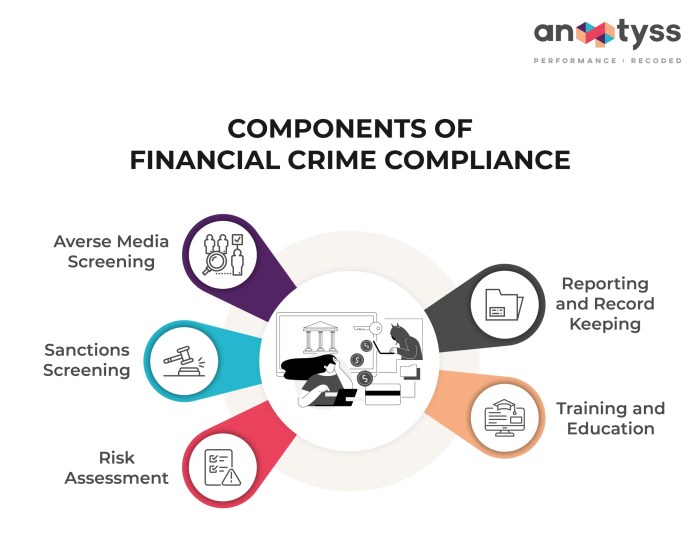Financial Forecasting and Business Growth are intrinsically linked. Understanding how to accurately predict future financial performance is crucial for driving sustainable growth and making informed strategic decisions. This exploration delves into the core principles of financial forecasting, examining various methods and techniques, and highlighting their vital role in shaping a company’s trajectory. We will navigate the challenges and limitations, explore technological advancements, and ultimately demonstrate how effective forecasting integrates seamlessly into robust business plans.
From understanding fundamental concepts like time series analysis and regression modeling to leveraging advanced analytics and visualization tools, this comprehensive overview provides a practical framework for businesses of all sizes. We will explore the importance of data accuracy, the impact of external factors, and best practices for enhancing forecast reliability. Ultimately, the goal is to equip readers with the knowledge and tools necessary to effectively utilize financial forecasting for achieving significant and sustainable business growth.
Defining Financial Forecasting

Financial forecasting is a crucial process for businesses of all sizes, providing a roadmap for future financial performance. It involves projecting future financial outcomes based on historical data, current trends, and anticipated future events. Accurate forecasting enables informed decision-making, allowing businesses to proactively adapt to changing market conditions and pursue growth opportunities.
Financial forecasting relies on several core principles. Firstly, it’s grounded in historical data analysis, identifying patterns and trends that can inform future projections. Secondly, it incorporates assumptions about future conditions, acknowledging the inherent uncertainty involved. Thirdly, it involves the use of appropriate forecasting models, chosen based on the specific needs and data availability of the business. Finally, regular review and adjustment of forecasts are vital, as unexpected events and changing market dynamics can significantly impact projected outcomes.
Types of Financial Forecasting Models
Several different models exist, each with its own strengths and weaknesses. The choice of model depends on factors such as the forecasting horizon, data availability, and the level of complexity desired. Common models include time series analysis (e.g., moving averages, exponential smoothing), regression analysis (relating financial variables to other factors), and econometric modeling (incorporating macroeconomic factors). More sophisticated techniques might involve simulation or machine learning algorithms, particularly for long-term forecasting. For example, a small business might use simple moving averages to forecast sales for the next quarter, while a large multinational corporation might employ econometric models to predict future revenue streams across multiple markets, considering global economic indicators.
Key Financial Metrics Used in Forecasting
A variety of key financial metrics are essential for accurate forecasting. These metrics provide insights into different aspects of a business’s financial health and performance. Key examples include revenue projections (based on sales forecasts and pricing strategies), cost of goods sold (including direct materials, labor, and manufacturing overhead), operating expenses (such as marketing, administrative, and research & development costs), and capital expenditures (investments in fixed assets). Profitability metrics such as gross profit margin, operating profit margin, and net profit margin are also critical. Finally, cash flow projections, considering both inflows and outflows, are crucial for assessing liquidity and ensuring the business has sufficient funds to meet its obligations. For instance, a company launching a new product might forecast increased revenue but also higher marketing expenses, carefully analyzing the impact on overall profitability.
Comparison of Short-Term and Long-Term Forecasting Techniques
| Feature | Short-Term Forecasting (e.g., 1-12 months) | Long-Term Forecasting (e.g., 3-10 years) |
|---|---|---|
| Time Horizon | Short, specific timeframe | Extended timeframe, covering several years |
| Data Used | Detailed, recent historical data | More aggregated data; reliance on trends and assumptions |
| Model Complexity | Simpler models (e.g., moving averages) often sufficient | More complex models (e.g., econometric modeling, simulations) may be necessary |
| Accuracy | Generally higher accuracy due to shorter time horizon | Lower accuracy due to increased uncertainty and reliance on assumptions |
| Purpose | Operational planning, budgeting, inventory management | Strategic planning, investment decisions, long-term resource allocation |
Forecasting Methods and Techniques
Financial forecasting relies on a variety of methods and techniques to predict future financial performance. The choice of method depends heavily on factors such as the availability of historical data, the desired level of accuracy, and the resources available. Understanding the strengths and weaknesses of each approach is crucial for selecting the most appropriate technique for a specific business context.
Time Series Analysis
Time series analysis utilizes historical data to identify patterns and trends over time. This approach is particularly useful when predicting short-term fluctuations in sales, inventory levels, or cash flow. Methods include moving averages, exponential smoothing, and ARIMA models. Moving averages, for example, smooth out short-term fluctuations to reveal underlying trends. However, they can lag behind significant shifts in the market. Exponential smoothing assigns greater weight to more recent data points, making it more responsive to change. ARIMA models are more complex, capable of capturing intricate patterns but requiring significant data and expertise. The strength lies in its ability to leverage historical data patterns, while weaknesses include its susceptibility to outliers and its inability to incorporate external factors.
Regression Analysis, Financial Forecasting and Business Growth
Regression analysis explores the relationship between a dependent variable (e.g., sales) and one or more independent variables (e.g., advertising expenditure, economic indicators). This method is valuable for understanding the impact of various factors on financial performance and for making more informed predictions. For example, a linear regression model could predict sales based on the amount spent on advertising. The strength of regression analysis lies in its ability to incorporate multiple variables and quantify their influence. However, it assumes a linear relationship between variables, which may not always hold true in the real world. Furthermore, the accuracy of the predictions depends heavily on the quality and relevance of the data used. Incorrectly specifying the model or using unreliable data can lead to inaccurate forecasts.
Qualitative Forecasting Methods
Qualitative forecasting methods rely on expert judgment and subjective opinions rather than solely on numerical data. Techniques include the Delphi method, market research surveys, and scenario planning. The Delphi method involves gathering opinions from a panel of experts through multiple rounds of questionnaires, aiming to reach a consensus. Market research surveys directly gather information from potential customers to gauge demand. Scenario planning involves developing multiple possible future scenarios and assessing their potential impact on the business. While qualitative methods are valuable for incorporating expert knowledge and considering unforeseen events, they are inherently subjective and lack the precision of quantitative approaches. Their strengths are in incorporating intangible factors and offering a broader perspective, but their weaknesses are in their subjective nature and lack of numerical precision.
Quantitative vs. Qualitative Forecasting Approaches
Quantitative forecasting relies on numerical data and statistical techniques, while qualitative forecasting relies on expert judgment and subjective opinions. Quantitative methods offer greater precision and objectivity, but may not capture all relevant factors. Qualitative methods are valuable for incorporating intangible factors and considering unforeseen events, but are less precise. Often, a combination of both approaches is used to leverage the strengths of each. For instance, a company might use quantitative time series analysis to project sales based on historical data and then incorporate qualitative insights from market research to adjust the forecast for potential changes in consumer preferences.
Data Accuracy and Reliability in Forecasting
The accuracy and reliability of financial forecasts are critically dependent on the quality of the input data. Inaccurate or incomplete data can lead to misleading predictions and poor decision-making. Data cleaning, validation, and verification are essential steps in the forecasting process. For example, using outdated or inconsistent sales figures will result in inaccurate sales forecasts. Robust data management practices, including regular data audits and the use of reliable data sources, are crucial for ensuring the credibility of forecasts. This includes not only the accuracy of the raw data but also the integrity of the processes used to collect and manage it.
A Typical Forecasting Process
The following flowchart illustrates the steps involved in a typical forecasting process:
[Imagine a flowchart here. The flowchart would begin with “Define Forecasting Objectives,” followed by “Gather and Prepare Data,” then “Select Forecasting Method,” then “Develop the Forecast,” then “Evaluate and Refine Forecast,” and finally “Implement and Monitor.”] The flowchart visually represents the iterative nature of the forecasting process, emphasizing the importance of continuous evaluation and refinement. Each step is crucial for generating reliable and actionable forecasts. For example, defining clear objectives ensures the forecast aligns with business goals, while evaluation and refinement improve the forecast’s accuracy over time.
Linking Financial Forecasting to Business Growth
Financial forecasting isn’t merely a number-crunching exercise; it’s a powerful tool directly impacting a business’s trajectory. By accurately predicting future financial performance, companies can make informed decisions that fuel sustainable growth. This section explores the crucial link between financial forecasting and business expansion, highlighting key performance indicators, strategic decision-making, resource allocation, and providing a real-world case study.
Accurate financial forecasts are the bedrock of strategic decision-making, allowing businesses to proactively address challenges and capitalize on opportunities. They provide a clear picture of the future, reducing uncertainty and allowing for more effective planning and execution.
Key Performance Indicators (KPIs) Demonstrating Business Growth
Several key performance indicators (KPIs) signal a company’s growth. Monitoring these metrics provides valuable insights into the effectiveness of strategies and allows for timely adjustments. These indicators offer a comprehensive view of business health, allowing for data-driven decision-making.
- Revenue Growth: A consistent increase in revenue demonstrates strong market demand and successful sales strategies.
- Profit Margin: Tracking profit margins reveals the efficiency of operations and pricing strategies. An increasing profit margin indicates improved profitability.
- Customer Acquisition Cost (CAC): A decreasing CAC signifies improved efficiency in acquiring new customers.
- Customer Lifetime Value (CLTV): A rising CLTV indicates that customers are more loyal and profitable over time.
- Market Share: An expanding market share demonstrates the company’s competitive advantage and increasing dominance within its industry.
Examples of Accurate Financial Forecasts Driving Strategic Decision-Making
Precise financial forecasts enable proactive strategic choices. For instance, a forecast predicting a surge in demand allows for increased production capacity, preventing stockouts and maximizing revenue. Conversely, a forecast showing a potential downturn can prompt cost-cutting measures or the exploration of new market segments. This proactive approach minimizes risk and maximizes opportunities.
For example, a company forecasting increased demand for its product might invest in expanding its manufacturing facility or hiring additional staff, ensuring it can meet the anticipated demand and avoid lost sales. Conversely, a forecast showing a potential decline in sales might lead the company to cut costs, reduce marketing expenses, or explore new product lines.
Forecasting’s Role in Resource Allocation and Investment Planning
Financial forecasting is instrumental in allocating resources effectively and making informed investment decisions. By projecting future cash flows and profitability, businesses can prioritize investments that offer the highest return on investment (ROI). This data-driven approach optimizes resource utilization and maximizes overall business value.
For example, a company might use financial forecasting to determine whether to invest in new equipment, expand into a new market, or develop a new product line. By projecting the potential return on investment for each option, the company can make an informed decision about where to allocate its resources.
Case Study: XYZ Company’s Growth Through Financial Forecasting
XYZ Company, a mid-sized manufacturer of consumer electronics, utilized sophisticated financial forecasting models to achieve substantial growth. By accurately predicting seasonal demand fluctuations, they optimized inventory levels, minimizing storage costs and preventing stockouts during peak seasons. Furthermore, their forecasts highlighted emerging market trends, enabling them to proactively develop new product lines that capitalized on these opportunities. This resulted in a 25% increase in revenue and a 15% improvement in profit margins within three years. Their meticulous forecasting allowed for targeted marketing campaigns, efficient resource allocation, and strategic investments that significantly boosted their market share. The integration of these forecasts into their overall business strategy was a key factor in their success.
Challenges and Limitations of Financial Forecasting
Financial forecasting, while a crucial tool for business growth, is not without its inherent challenges and limitations. The accuracy of forecasts is significantly impacted by various factors, ranging from inherent biases in the models used to the unpredictable nature of external economic forces. Understanding these limitations is crucial for effective decision-making and risk management. A realistic approach acknowledges the probabilistic nature of forecasting and focuses on building robust processes to mitigate potential inaccuracies.
Predictive models, by their very nature, rely on historical data and assumptions about future trends. This reliance introduces several potential biases. For instance, using only past performance to predict future growth might overlook significant changes in the market or the company’s strategic direction. Similarly, confirmation bias, where decision-makers favor information confirming their pre-existing beliefs, can lead to overly optimistic or pessimistic forecasts. Furthermore, the choice of forecasting model itself can significantly impact the outcome; a model unsuitable for the specific business context might yield inaccurate results. For example, using a simple linear regression model to forecast sales during a period of rapid technological disruption could lead to significant underestimation or overestimation.
Impact of External Factors on Forecasting Accuracy
External factors, often beyond a company’s control, can significantly influence the accuracy of financial forecasts. Economic downturns, for example, can dramatically reduce demand and impact revenue projections. Unexpected geopolitical events, such as trade wars or pandemics, can also disrupt supply chains and alter market dynamics, rendering initial forecasts obsolete. Fluctuations in currency exchange rates can impact the profitability of international businesses, while changes in interest rates can influence borrowing costs and investment decisions. Consider, for instance, the unexpected impact of the COVID-19 pandemic on various industries. Many businesses that had optimistic forecasts for 2020 were forced to drastically revise their projections downward due to lockdowns and decreased consumer spending.
Strategies for Mitigating Risks Associated with Inaccurate Forecasts
Several strategies can help mitigate the risks associated with inaccurate financial forecasts. Diversifying forecasting methods, using a combination of qualitative and quantitative approaches, can provide a more robust and comprehensive view. Regularly reviewing and updating forecasts, incorporating new data and insights as they become available, is essential to maintain accuracy. Sensitivity analysis, which explores the impact of changes in key assumptions on the forecast, can help identify potential vulnerabilities and inform contingency planning. Furthermore, establishing a robust feedback mechanism, where actual results are compared to forecasts, allows for continuous improvement of the forecasting process and identification of areas for refinement. This iterative approach, incorporating lessons learned from past forecasts, helps improve future predictive accuracy.
Best Practices for Improving the Reliability of Financial Forecasts
Effective financial forecasting relies on a combination of sound methodologies and rigorous practices. Implementing these best practices can significantly enhance the reliability of forecasts.
- Use a combination of forecasting methods: Employ both quantitative (e.g., time series analysis, regression models) and qualitative (e.g., expert opinions, market research) techniques to gain a holistic perspective.
- Incorporate scenario planning: Develop forecasts under various possible economic and market conditions (best-case, worst-case, and most-likely scenarios) to prepare for a range of outcomes.
- Regularly review and update forecasts: Continuously monitor key indicators and adjust forecasts based on new data and insights. This is especially crucial in dynamic market environments.
- Utilize advanced analytics and data visualization: Leverage data mining techniques and visualization tools to identify patterns, trends, and potential risks that might not be apparent using traditional methods.
- Involve cross-functional teams: Gather input from various departments (sales, marketing, operations, finance) to ensure a comprehensive understanding of the business and its potential challenges.
- Document assumptions and limitations: Clearly articulate the assumptions underlying the forecast and acknowledge its inherent limitations. This transparency enhances accountability and improves decision-making.
Financial Forecasting Tools and Technologies
Accurate financial forecasting is crucial for business success, and the right tools and technologies can significantly enhance the process. Sophisticated software and data analytics play a vital role in improving forecast precision, enabling businesses to make more informed decisions. This section explores various tools and techniques, highlighting their features and benefits.
Financial Forecasting Software Options
Numerous software solutions cater to different business needs and scales. These range from simple spreadsheet programs to complex enterprise resource planning (ERP) systems with integrated forecasting modules. Choosing the right software depends on factors such as budget, company size, forecasting complexity, and desired level of automation.
- Spreadsheet Software (e.g., Microsoft Excel, Google Sheets): These are widely accessible and offer basic forecasting capabilities through functions like linear regression, moving averages, and trend analysis. However, they may lack advanced features and scalability for larger businesses with complex forecasting requirements.
- Dedicated Financial Forecasting Software: Specialized software packages (e.g., Anaplan, Vena, Adaptive Insights) provide more advanced features such as scenario planning, what-if analysis, and data visualization. They often integrate with other business systems for seamless data flow.
- Enterprise Resource Planning (ERP) Systems: ERP systems (e.g., SAP, Oracle) typically incorporate financial forecasting modules. These offer comprehensive integration with other business functions, allowing for a holistic view of the organization’s financial performance and future prospects. However, they are often expensive and require significant implementation effort.
Data Analytics and Visualization in Financial Forecasting
Data analytics plays a critical role in enhancing forecasting accuracy. By leveraging historical data, market trends, and other relevant information, businesses can develop more sophisticated forecasting models. Data visualization tools then allow for easy interpretation and communication of these forecasts.
Techniques such as time series analysis, regression modeling, and machine learning algorithms can be employed to identify patterns, trends, and anomalies in financial data. These insights can then be used to refine forecasting models and improve their accuracy. Visualizations, such as charts, graphs, and dashboards, help stakeholders quickly grasp the key findings and make informed decisions.
Enhance your insight with the methods and methods of Best Payroll Software for Small Businesses.
Hypothetical Scenario: Advanced Analytics Improving Forecast Precision
Imagine a retail company using traditional methods to forecast holiday sales. Their previous forecasts relied heavily on historical data and simple linear regression, resulting in significant inaccuracies. By implementing advanced analytics, specifically incorporating machine learning algorithms and external data sources like social media sentiment and competitor activity, the company dramatically improved its forecast. The new model, incorporating factors previously overlooked, predicted sales within a 2% margin of error compared to the previous 10% margin. This allowed for optimized inventory management, reduced stockouts, and increased profitability during the peak season.
Integrating Financial Forecasts into Business Plans: Financial Forecasting And Business Growth

A well-structured business plan relies heavily on accurate and comprehensive financial forecasts. These forecasts aren’t mere projections; they are the bedrock upon which investment decisions, operational strategies, and overall business success are built. Integrating financial forecasts effectively ensures that the plan is realistic, achievable, and compelling to potential investors or lenders.
Integrating financial forecasts into a business plan involves more than simply adding a financial statement section. It requires a cohesive narrative that connects the forecasts to the overall business strategy, demonstrating how the projected financial outcomes align with the company’s goals and objectives. This integration strengthens the credibility and persuasiveness of the entire business plan.
Incorporating Financial Forecasts into a Business Plan
A robust business plan integrates financial forecasts seamlessly throughout its various sections. The executive summary should highlight key financial projections, such as revenue targets, profitability, and cash flow. The market analysis section can utilize forecasting data to support market size estimations and growth projections. The operational plan should justify its proposed strategies based on the financial implications Artikeld in the forecasts. Finally, the funding request section directly uses the forecasts to justify the amount of funding needed and demonstrate the potential return on investment. Each section should reference and support the overall financial projections, creating a unified and persuasive document.
Using Forecasting Data to Support Funding Applications
Forecasting data provides the crucial evidence needed to secure funding. Investors and lenders are primarily interested in the financial viability of a business. A detailed financial forecast, including projected income statements, balance sheets, and cash flow statements, demonstrates the potential for profitability and return on investment. This data should be presented clearly and concisely, emphasizing key metrics such as revenue growth, profitability margins, and break-even points. Sensitivity analysis, showing how changes in key assumptions affect the projections, can also strengthen the application by showcasing a realistic understanding of potential risks. For example, a startup seeking seed funding might project a 30% year-on-year revenue growth for the next three years, supported by market research and sales strategies. This projection, coupled with a detailed cash flow forecast, would demonstrate the company’s potential to achieve profitability and repay the investment.
Effective Communication Strategies for Presenting Financial Forecasts
Clear and concise communication is paramount when presenting financial forecasts to stakeholders. Avoid overly technical jargon; instead, use plain language and visuals to convey key information. Charts, graphs, and tables are particularly effective in highlighting trends and key performance indicators. A well-structured presentation should begin with a summary of the key findings, followed by a detailed explanation of the underlying assumptions and methodologies. It’s crucial to address potential risks and uncertainties, demonstrating a realistic understanding of the business environment. Interactive presentations, allowing for questions and discussions, can further enhance understanding and build confidence in the forecasts. For instance, instead of just stating projected profits, a visual representation showing the projected profit margin against industry benchmarks would be more compelling and easier to understand.
Sample Business Plan Section: Key Financial Projections
The following is a sample section illustrating the integration of financial projections within a business plan:
Financial Projections (2024-2026)
Our financial projections are based on conservative estimates of market growth and our planned marketing and sales strategies. We project significant revenue growth driven by increasing market demand for our product/service. We anticipate achieving profitability within the second year of operation, based on our cost structure and pricing strategy. We have factored in potential risks such as increased competition and economic downturns, utilizing sensitivity analysis to demonstrate our resilience.
| Year | Revenue | Cost of Goods Sold | Gross Profit | Operating Expenses | Net Profit |
|---|---|---|---|---|---|
| 2024 | $500,000 | $250,000 | $250,000 | $150,000 | $100,000 |
| 2025 | $1,000,000 | $400,000 | $600,000 | $300,000 | $300,000 |
| 2026 | $1,800,000 | $720,000 | $1,080,000 | $540,000 | $540,000 |
These projections demonstrate a strong trajectory towards profitability and sustainable growth, justifying our funding request.
End of Discussion

Mastering financial forecasting is not merely about predicting numbers; it’s about empowering businesses with the foresight to navigate complexities, seize opportunities, and achieve ambitious growth targets. By understanding the various methods, mitigating potential limitations, and leveraging available technologies, organizations can transform financial projections from mere estimations into powerful tools for strategic planning and decision-making. The ability to accurately forecast financial performance is the cornerstone of sustainable business success in today’s dynamic market landscape.
FAQ Corner
What are some common mistakes businesses make in financial forecasting?
Common mistakes include relying on outdated data, neglecting external factors, using overly simplistic models, and failing to regularly review and adjust forecasts.
How often should a business update its financial forecasts?
The frequency depends on the business and its industry. However, regular updates, at least quarterly, are generally recommended to account for changing market conditions and internal performance.
What is the role of sensitivity analysis in financial forecasting?
Sensitivity analysis helps assess the impact of changes in key assumptions on the forecast. It allows businesses to understand the potential range of outcomes and prepare for various scenarios.
How can small businesses with limited resources effectively utilize financial forecasting?
Small businesses can utilize free or low-cost software, focus on key performance indicators, and leverage readily available industry data to create effective, albeit simpler, forecasts.







